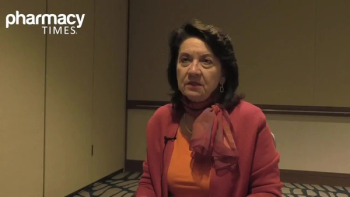
Mice Determine the Best Treatments for Cancer Patients: Are Computers Next?
New method may help personalize treatments for aggressive cancer.
New method may help personalize treatments for aggressive cancer.
A cure for cancer is one of the most elusive discoveries for scientists today.
However, as new studies pour in, treatment options for cancer patients become less intrusive and could even one day lead to computer generated treatment plans, according to researchers at UC Davis and Jackson Laboratory. The team of researchers recently developed a new way to personalize treatments for aggressive bladder cancer.
In early proof-of-concept studies, investigators took bladder tumors from humans and grafted them into mice in order to test multiple therapies in the tumor models. If treatments were effective in the model, then it may be eventually administered to a human patient.
“By prescreening, we can determine which medication works, providing a much higher chance the patient will benefit,” said first author Chong-Xian Pan, MD. “This can reduce toxicity, increase efficiency and lower costs.”
In theory, finding a tumor’s mutations should give clear directions to the doctor as to which treatment to utilize as targeted drugs are matched with genetic anomalies. However, while the genomic tools can find the mutations, there is not always a way for them to identify which ones drive the patient’s cancer. Without knowing which mutations are crucial to cancer growth, oncologists must opt for one therapy over another, taking the risk of choosing the incorrect therapy and increasing toxicity within the patient.
“The patient gets a biopsy and we send the tissue off for genomic analysis, which will show us abnormalities that can be treated,” said Ralph de Vere White, distinguished professor of urology and director of the UC Davis Comprehensive Cancer Center. “Let’s say there are 4 of them. Now we have to guess which one is driving the cancer, and the success rate is about 12%. That’s putting the patient through a lot for just 12%.”
While Pan’s study was modest in size, the grafts showed impressive genetic fidelity to the original patient tumors of between 92 and 97%. Patients continued to see positive results even after several months had gone by. This outcome proved vastly more effective than growing cell lines in a dish, which deviate from the mother tumor in just a few days.
Results also showed information that would be impossible to obtain from a patient, researchers said. Because of the rapid development of tumors in mice, scientists were able to ascertain which therapies were effective more quickly. They were also able to conduct multiple biopsies to follow tumor development, identify escape mutations, and test therapeutic countermoves. Most importantly, the grafts provided suggestions as to which drugs could help patients best.
“In one case, the drug cisplatin didn’t work and gemcitabine barely worked, but the combination really knocked the tumor out in the mouse,” Pan said. “And that’s exactly what happened in the patient.”
While using mice to determine which treatments would be most effective in patients is of great importance to oncologists, the ultimate goal, according to researchers, is to have computers tell physicians which treatment option is best for which patient.
While this may seem like the stuff of science fiction, researchers stay positive in their search for computer generated treatment options. For now, mice serve as an optimal alternative until scientists crack the code to having computers dictate which therapy to use.
“We’re not saying the mouse model is the answer, but we have a high failure rate with the standard of care, and we’re trying to figure out if the mouse can help us to better,” de Vere White said. “In time, we’d like to be able to biopsy the patient, sequence the tumor, feed that information into the computer and have the computer tell us which therapy will work.”
Newsletter
Stay informed on drug updates, treatment guidelines, and pharmacy practice trends—subscribe to Pharmacy Times for weekly clinical insights.

















































































































































































































